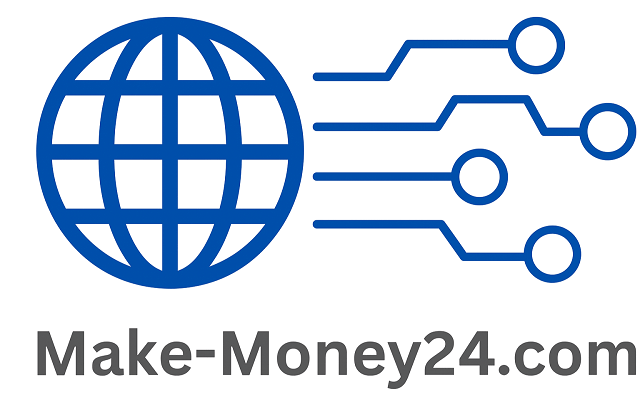Every online retailer shares a universal objective: achieving a higher volume of sales. From attracting new shoppers to maximizing repeat purchases, conversion optimization is the cornerstone of e-commerce success. In many cases, even small tweaks—such as revising your homepage layout or refining your checkout steps—can produce big, lasting improvements. Below, you’ll find four areas to focus on if you want to transform an average-performing store into a revenue powerhouse. By investing time in these strategic adjustments, you’ll be well on your way to a more profitable and customer-centric e-commerce business.

Strengthen Your Homepage Strategy
A compelling homepage is more than just a digital welcome mat; it’s a chance to steer visitors toward the products or categories that matter most to your business. Many retailers underutilize this space by packing it with random deals or broad messaging. Instead, think carefully about the logical paths you want shoppers to follow. Promote your best-selling or most universally appealing items front and center, and consider highlighting major sales or unique, limited-time offers right away. This direct, curated approach helps shape user journeys in a way that boosts conversions.
Equally important is creating a user-friendly top navigation or menu. Whether you prioritize categories, special collections, or seasonal merchandise, ensure your homepage offers clear signposts. Subtle guidance, such as featured recommendations or “shop by category” buttons, funnels customers toward the right pages without making them search manually. Take a page from industry giants that use personalized elements—like “new to our store?” prompts—to quickly orient newcomers and encourage them to explore deeper.
Lastly, your homepage should echo your brand’s identity. Visual design choices—like color palettes, imagery, and typography—help set the tone for the shopping experience. An appealing layout fosters trust, while concise messaging underscores your store’s value proposition, whether that’s exceptional customer service, exclusive product lines, or unbeatable prices. A balanced homepage that combines brand personality, smart navigation, and strategic promotions lays the groundwork for higher conversions.
Organize Categories and Expand Payment Options
Smart product categorization is crucial because not all shoppers arrive knowing exactly what they want. While some buyers use your site’s search bar, a large proportion navigate via menus and product clusters. To accommodate them, ensure your categories are clearly named and sensibly structured. If you’re in fashion, for instance, organize goods by gender, style, or season. If your store sells electronics, separate items by device type, brand, or intended use. Logical pathways make it easier for browsers to stumble upon new discoveries and ultimately increase their likelihood of purchasing.
Diverse payment and delivery methods also remove barriers that might otherwise prevent a sale. Some customers may prefer classic credit card processing, while others look for digital wallets or localized payment systems—especially if you serve international audiences. Offering multiple checkout options can add a meaningful percentage to your overall conversions, as users will feel your store caters to their personal preferences. Even extending the possibility of phone or email orders can help capture less tech-savvy buyers who remain hesitant about online transactions.
Beyond payment, it’s wise to consider flexibility in how items are shipped or picked up. Features like in-store pickup or curbside collection appeal to those who want their orders quickly without paying extra for shipping. Highlight these choices in your product pages or category listings so potential buyers know from the outset that you provide a variety of convenient methods to complete a purchase. When your site is easy to navigate and inclusive in its payment and delivery offerings, it becomes more welcoming to a wider range of customers.
Enrich Product Pages with Engaging Content
Product pages should function as persuasive showcases, telling a compelling story that goes beyond mundane specs and stock photos. High-impact copywriting is one powerful way to do this. Rather than limiting your descriptions to a dry list of features, explain how each feature benefits the user. Emphasize what sets this product apart and why it’s worth the price. Use language that matches your brand’s tone—whether playful and casual or formal and authoritative—to build a narrative that resonates with your target audience.
Videos and interactive media can also amplify the appeal of each listing. A short demonstration clip showing how a kitchen gadget actually works, for instance, can address concerns about functionality and build trust that the purchase is worthwhile. Similarly, a detailed size and fit video for clothing items helps buyers visualize how an article might look on them—reducing returns and dissatisfied customers. Even simple visual elements, such as 360-degree image views or product comparisons, provide more context and help people feel comfortable hitting the “Add to Cart” button.
In addition to creative visuals, transparency around details is key. Disclose relevant information about shipping costs, estimated arrival times, warranties, or guarantees right on the product page, so shoppers don’t have to hunt for it. Encourage genuine customer reviews and consider adding an FAQ section for popular queries. The more thorough and open you are, the fewer reasons shoppers have to hesitate. When potential buyers see you’ve covered all their questions and concerns, their path to conversion becomes that much smoother.
Simplify Checkout to Reduce Abandonment
An overly complex or confusing checkout process is one of the biggest drivers of cart abandonment. Streamlining these final steps can have a dramatic impact on your conversion rate. Start by offering a guest checkout feature so that visitors can make a purchase without having to create an account first—some data shows that over a quarter of potential customers abandon the process if forced to register. Keep form fields to the essentials, too. Asking for too much information can feel invasive and will only deter impatient shoppers.
Persistent shopping carts are another best practice. Customers often multitask or get interrupted, and if they come back to find their items removed, they may not bother adding them all over again. Save their chosen products until they either complete the purchase or manually remove the items. This small courtesy respects the shopper’s time and fosters loyalty. Similarly, if you do require customer accounts, consider auto-filling known information for returning buyers to minimize clicks and keystrokes.
Finally, reassure customers by displaying trust signals—like secure payment icons, return policies, or contact information—throughout the checkout phase. Encourage them to finalize their order with well-placed calls to action that confirm how close they are to completion. Even providing a visual progress bar can be enough to keep them focused and reduce the likelihood of them bailing at the last minute. By focusing on simplicity, clarity, and user-friendly design in your checkout flow, you’ll convert more carts into confirmed orders and build ongoing satisfaction in the process.

